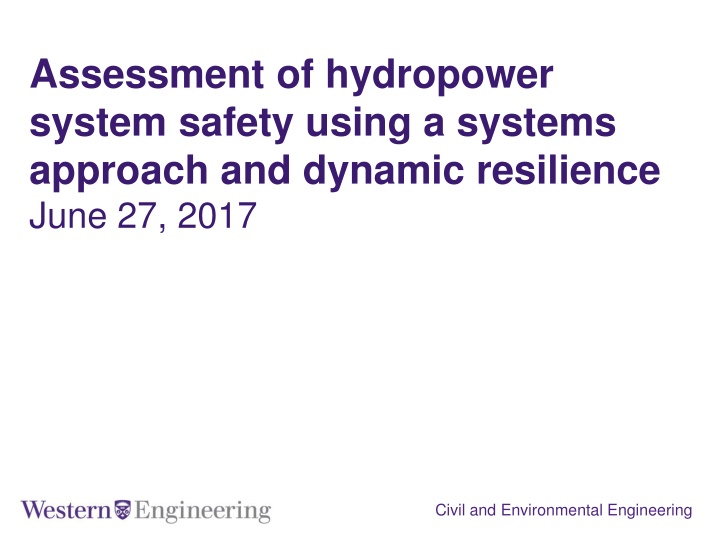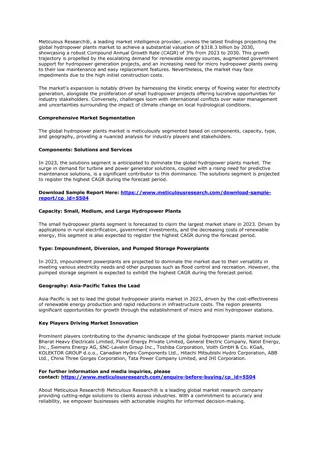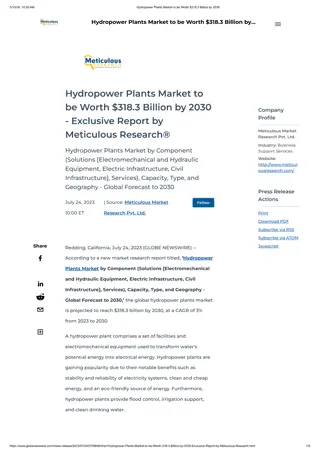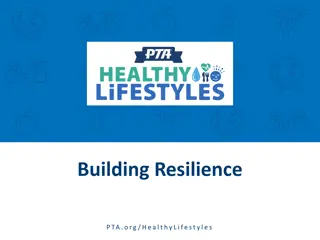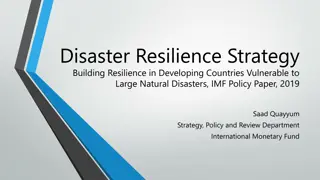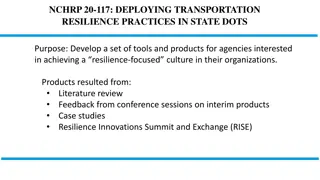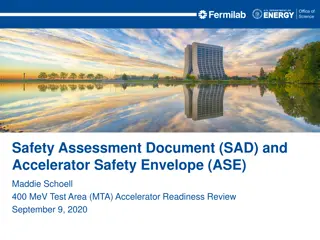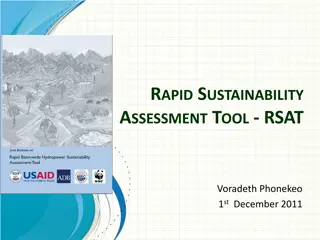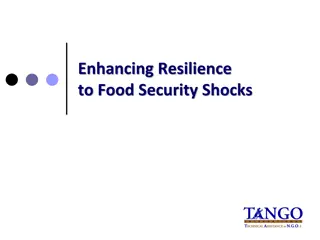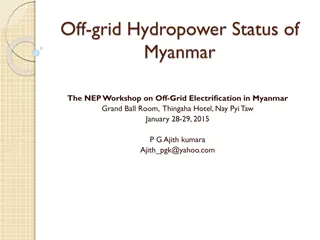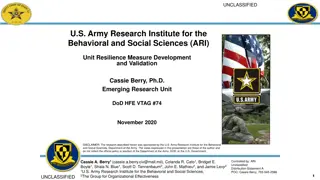Dynamic Resilience in Hydropower Safety Assessment
Using a systems approach and dynamic resilience, this study evaluates the safety of hydropower systems. It highlights shortcomings in traditional risk assessment methods and proposes a new control-based approach. Through simulation and dynamic resilience analysis, the research aims to enhance safety outcomes and response strategies for hydropower systems.
Download Presentation

Please find below an Image/Link to download the presentation.
The content on the website is provided AS IS for your information and personal use only. It may not be sold, licensed, or shared on other websites without obtaining consent from the author.If you encounter any issues during the download, it is possible that the publisher has removed the file from their server.
You are allowed to download the files provided on this website for personal or commercial use, subject to the condition that they are used lawfully. All files are the property of their respective owners.
The content on the website is provided AS IS for your information and personal use only. It may not be sold, licensed, or shared on other websites without obtaining consent from the author.
E N D
Presentation Transcript
Assessment of hydropower system safety using a systems approach and dynamic resilience June 27, 2017 Civil and Environmental Engineering
Dam Systems Operator Operating decisions Reservoir level sensors Turbines Inflows Spillway Gates Outflows
Dam Systems Operator Operating decisions Reservoir level sensors Turbines Inflows Spillway Gates Outflows
Traditional Risk Assessment Shortcomings: 1. Linear event progression (eg. event tree) that ignores interactions and system feedbacks 2. Subjective judgement for selection of events and their likelihoods 3. Events assumed to be independent 4. Emphasis placed on failures when control flaws or design errors can be just as dangerous 5. Systems decomposed to make them more manageable 6. Human failures and software flaws difficult to deal with 7. Focus on edge of design envelope events (low probability) 7
A New Approach Viewing system safety as a control problem Using simulation to assess outcomes of the full range of operating conditions, putting possibilities ahead of probabilities Using dynamic resilience to assess safety outcomes of simulation 8
Project Methodology Generic control system base structure (adapted from Leveson, 2011)
Project Methodology Generic control system base structure (adapted from Leveson, 2011 for a hydropower system) Input scenarios of starting reservoir elevations and system states Base structure converted into simulation model that includes the detailed system structure, feedbacks and interactions Simulation outputs used to assess resilience and develop improved mitigation and response strategies 11
Project Methodology Use of Systems Theoretic Process Analysis and component functions Database to come up with scenarios 13
Project Methodology Deterministic system dynamics simulation engine to derive scenario outcomes 14
Simulation Model Sectors Generic control system base structure (adapted from Leveson, 2011)
Simulation Model Sectors Example: Hydraulic system state
Project Methodology Processing of simulation model outputs to extract useful information about safety, which can be used to refine and improve response and mitigation strategies 17
Resilience Replacement of static risk estimates Focus on system performance before, during and after disturbance event Explicit consideration of system s adaptive capacity Development of preventative strategies and emergency response plans 18
Resilience System performance used to calculate resilience with respect to safety (need to define safety performance measures) Transformation 19
